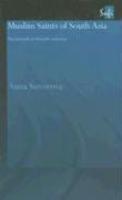
Book Summary
This book studies the veneration practices and rituals of the Muslim saints. It outlines principal trends of the main Sufi orders in India, the profiles and teachings of the famous and less known saints, and the development of pilgrimage to their tombs in India, Pakistan and Bangladesh. A detailed discussion of the interaction of the Hindu mystic tradition and Sufism shows the polarity between the rigidity of the orthodox and the flexibility of the popular Islam in South Asia. Treating the cult of saints as a universal and all pervading phenomenon embracing the life of the region in all its aspects, the analysis includes politics, social and family life, interpersonal relations, gender problems and national psyche. The author uses a multidimensional approach to the subject: a historical, religious and literary approach to sources is combined with an anthropological study of the rites and rituals of the veneration of the shrines and the description of the architecture of the tombs. This book studies the veneration practices and rituals of the Muslim saints. It outlines principal trends of the main Sufi orders in India, the profiles and teachings of the famous and less known saints, and the development of pilgrimage to their tombs in India, Pakistan and Bangladesh. A detailed discussion of the interaction of the Hindu mystic tradition and Sufism shows the polarity between the rigidity of the orthodox and the flexibility of the popular Islam in South Asia.
Book Details
| Book Name | Muslim Saints Of South Asia: The Eleventh To Fifteenth Centuries |
| Author | Anna Suvorova |
| Publisher | Routledge/curzon (Sep 2004) |
| ISBN | 9780415317641 |
| Pages | 244 |
| Language | English |
| Price | 8629 |
